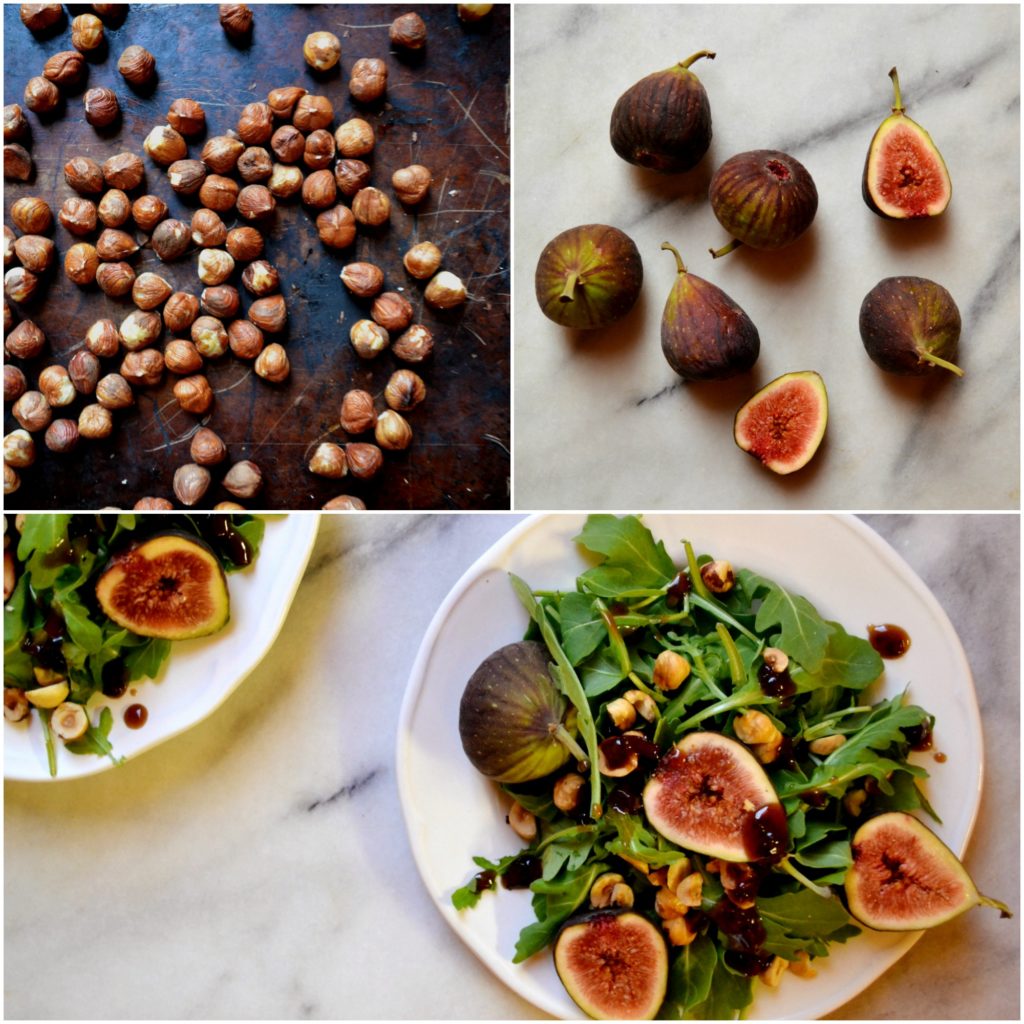
🎁 Holiday Special: SAVE 52% on the Nutrition Coach Starter Package. Limited number remaining.

🎁 Holiday Special: SAVE 52% on the Nutrition Coach Starter Package. Limited # left.

Hazelnuts are the nut of the hazel shrub. Turkey grows most of the world’s hazelnuts. Their rich, mildly nutty flavor pairs well with chocolate; hazelnuts’ biggest claim to fame might be the popular processed spread Nutella. Hazelnuts can be eaten simply on their own or used in home baking. They are a good source of dietary fat, contain some fiber, and offer a number of vitamins and minerals, especially vitamin E and manganese.
Appropriate to the name, hazelnuts are the nut of the hazel shrub. They are sometimes known as filberts or the cobnut.
Turkey grows 75% of the world’s hazelnuts. However, in recent years, weather changes in Turkey have resulted in decreased hazelnut production, causing concern among hazelnut fans.
Hazelnuts have a rich, mildly nutty taste that make them ideal for desserts and candy. Hazelnuts are the star of the hazelnut-chocolate spread Nutella, beloved by Italians. They’re also used in Frangelico liquor, Ferrero Rocher candies, and other truffles and pralines.
Hazelnuts aren’t just for processed foods, though. Whole or crushed, hazelnuts can be used in home-baking, or enjoyed simply on their own.
Hazelnuts are brown in color and have a rounded, slightly tear-drop shape. The outer layer of the hazelnut is covered by a thin, paper-like skin that may be removed before cooking.
One-quarter cup of whole hazelnuts contains 212 calories, 5.1 grams of protein, 20.5 grams of fat, 5.6 grams of carbohydrates, 3.3 grams of fiber, and 1.5 grams of sugar.
Containing small amounts of many vitamins and minerals, hazelnuts are a good source of vitamin E, and a very good source of manganese.
If buying whole, unshelled nuts, pick up a nut and give it a shake. If you hear a rattling sound, the nut may be old and stale.
Also check the nut shells: they should be smooth with no cracks, holes, or signs of mold.
Finally, the nuts should smell fresh and nutty. If the nuts smell “off” this may be a sign they have gone rancid.
In the package, shelled hazelnuts will last longer than unshelled nuts. Once the package is open though, they won’t last as long. You can keep shelled nuts in the pantry or the fridge — the latter may extend their shelf life, and is especially important if you live in a warm and humid climate.
Shelled hazelnuts will last about 4-6 months in the pantry or up to a year in the fridge or freezer.
Hazelnut skin has a slightly bitter flavor. Removing the skins is optional and depends on your personal preference, and / or the recipe.
If you prefer hazelnuts without skins, look for skinned nuts — or remove the skins by toasting them gently in the oven. To toast the nuts, lay them in a single layer on a baking sheet. Bake at 375 degrees Fahrenheit for about 10 minutes. Remove the nuts and wrap them in a clean dish towel. Let them cool slightly (about 5 minutes), then rub them roughly in the towel for several minutes. The friction should remove most of the skin; don’t worry if some is left on.
Once toasted (following the above instructions), hazelnuts are ready to enjoy. Try adding them to a salad, including them on a cheese tray (they pair nicely with goats cheese), using chopped hazelnuts as a garnish for roasted vegetables, or enjoying them as a simple snack.
Tip: If you like the popular spread Nutella, you can make your own hazelnut butter or hazelnut-chocolate spread at home with the help of a food processor.

Toasted hazelnuts, sweet figs, peppery arugula, and a luxurious balsamic butter dressing combine to make a memorable salad, which is equally suitable served for a casual lunch or as an elegant side for a special occasion.
Prep Time: 10 minutes Cook Time: 25 minutes Yield: 2 servings salad, 4 servings sauce
Salad Directions:
First, roast your hazelnuts: Place the hazelnuts on a baking tray and bake in 350 degree Fahrenheit oven for 10-12 minutes, or until the hazelnuts become fragrant and golden at the edges.
While your hazelnuts are roasting, divide the arugula and fresh figs evenly and arrange on two separate bowls / plates.
Then prepare your sauce.
Sauce Directions:
In a small saucepan over medium high heat, bring the balsamic vinegar and the minced shallots to a simmer. Simmer for 5 to 10 minutes, stirring frequently, until the vinegar has thickened and reduced to about half.
Turn the heat to low, and add the butter in cubes, whisking it in as you go. You should get a thick, glossy, emulsified sauce. Remove from heat once all the butter has been added and the sauce is nice and uniform. Allow to cool slightly before drizzling over your salad.
Store any left over sauce in the fridge.
Enjoy!
Precision Nutrition’s Encyclopedia of Food expands every single month as we highlight new foods and showcase beautiful food photography. If you’d like to stay up to date, simply click this link. From there, we’ll send you a FREE copy of our recipe book. We’ll also let you know when new and delicious foods are added to the site.
Hazelnuts are the nut of the hazel shrub. Turkey grows most of the world’s hazelnuts. Their rich, mildly nutty flavor pairs well with chocolate; hazelnuts’ biggest claim to fame might be the popular processed spread Nutella. Hazelnuts can be eaten simply on their own or used in home baking. They are a good source of dietary fat, contain some fiber, and offer a number of vitamins and minerals, especially vitamin E and manganese.